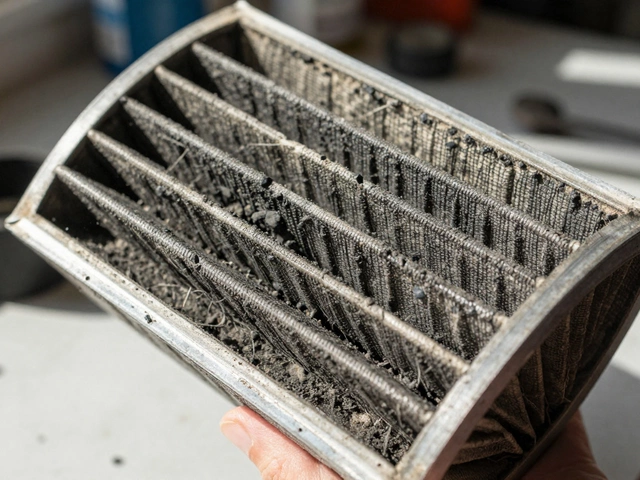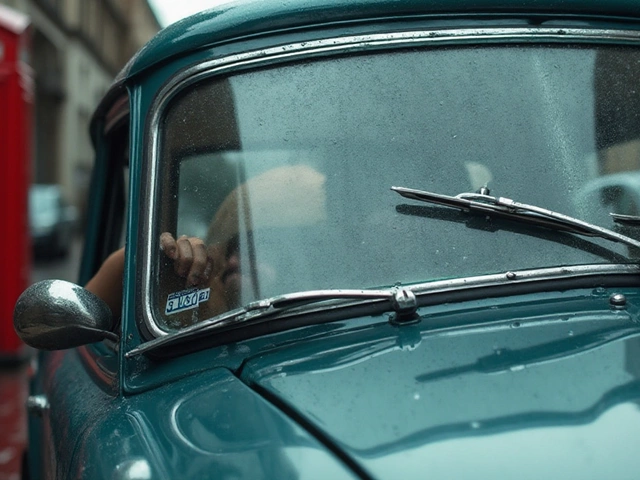
Ever stood in an auto parts shop staring at a wall of windscreen wipers and wondered if they're all basically the same? You're not alone. Plenty of car owners think grabbing any set off the rack will do the trick, only to end up wrestling with a wiper that just won't snap on or leaves streaks like some finger-painting toddler. Mismatched wipers aren’t just an annoyance—they can ruin visibility and, in the worst cases, even damage your windscreen. If you’re tired of guesswork and YouTube installation fails, it's time to get the complete low-down on wiper compatibility: which ones work where, why sizes and fittings matter, and what to avoid if you don’t want to shell out for new wipers every few months.
Why Not Every Windscreen Wiper Will Fit Your Car
Here’s the awkward truth: windscreen wipers are definitely not “one size fits all.” Cars are just too different. Even the big-branded blade labeled with words like "Universal" has limits. The first thing that throws people off? The shape and length of the wiper blade. Manufacturers design each car’s windscreen with its own curves and angles, and different-sized blades clean different surface areas. Install a too-short wiper, and you'll be squinting through un-wiped patches, especially on rainy nights. Stick on a blade that’s too long, and it’ll bang against your windshield edge or the other wiper—if it doesn’t fling itself loose entirely on a fast swipe.
But it gets trickier. The real differentiator isn’t just blade length—it’s the wiper arm connection. Ever heard of hook-style, pinch-tab, side-lock, or bayonet fittings? There are over ten main types, with subtle design differences, and each car model uses its own setup. Hook arms (the most common in older cars) are totally different from the push-button or side-pin types that pop up on newer models. If you try shoving a flat-blade with a pinch-tab connector onto an old J-hook arm, you’ll discover “universal” only stretches so far. Ford alone has changed wiper arms on the Fiesta six times since the mid-2000s.
Another fun fact: sometimes the driver's and passenger's side wipers are different lengths and attach differently—even on the same car. High-end brands add rain sensors or heating elements in their blades, making compatibility a total minefield. Cheap wipers might seem tempting till you see the streaky mess or listen to that spine-grinding squeak with every pass. Quality is another piece of the puzzle—just because a wiper physically fits doesn’t mean it’ll clear water safely or last through winter. The short answer? Double-check: length, fitting type, and sometimes even the year or trim level of your car. Your vehicle’s owner’s manual or a quick search on the manufacturer's site can save a world of frustration.
Common Types of Wiper Blades and Their Fitment Systems
When you stroll into the auto section, you’ll see a confusing scatter of labels and styles: conventional, flat, hybrid, and more. So what do these types mean for your windshield—and will they actually fit?
Conventional wiper blades, the old-school kind, have a metal frame that holds a rubber blade. They’re inexpensive, easy to find, and mostly use hook or J-hook fittings. These are common on cars from the 90s and early 2000s. But if you drive a newer hatchback, sedan, or an SUV, you’ll run into flat or beam blades. These blades are just a solid strip of flexible rubber and plastic—they hug modern, curved windshields better, resist wind lift, and cope with road grime during high speed. But they often need special adapters for installation and aren’t always straightforward swaps for older cars.
Hybrids blend both worlds—a sleek profile with extra support for tough weather. Some luxury cars demand specific hybrid wipers to keep their high-tech sensors working. And things really get spicy with rear wiper blades, which tend to have their own unique (and sometimes totally non-interchangeable) fittings. Ever tried to force-fit a universal rear blade only to have it flop off on the first rainstorm? Welcome to the club.
Now about fittings: The "universal" adapters in wiper packs today usually mean a collection of plastic casings that claim to cover the most common interfaces. In reality, some “universal” adapters barely hold up, especially after a few months of weather. Here are the most common fitment systems you’ll encounter:
- Hook Arm (J-Hook): Classic and found on millions of vehicles. Easiest to fit, but newer cars are moving away from this design.
- Pin Arm: Less common, relies on a small peg fitting into a hole on the blade.
- Bayonet Arm: Blade slides on and then locks in place—usually used by French manufacturers.
- Push Button (Side Lock): Quick-release, common on modern cars like Volkswagen or Mercedes.
- Slim Top: Some high-end Audis and BMWs use this minimalistic type, with pricey replacement options.
Brands like Bosch, Valeo, or Rain-X try to cover every connection style, but it pays to check both the adapter and arm before buying. Want to avoid a post-purchase meltdown in your driveway? Take a close-up photo of your current blade where it connects to the arm or, if you’re feeling bold, bring the old wiper to the shop as your “sample.”

How to Find the Right Windscreen Wipers for Your Car
Nobody wants to waste cash or time, so let’s skip the trial-and-error drama. Here’s how you get it right the first time. First, your owner’s manual is gold. Flip to the maintenance or specs section, and there’s usually a chart for wiper blade lengths for driver, passenger, and rear windows, sometimes even by trim level. Don’t have the manual? Nearly every auto parts or online wiper brand site has a “fitment guide.” Plug in your make, model, and year—that’s usually enough to narrow down the actual options. Some sites go further, showing connector types with close-up images (very helpful if your car is a bit unusual).
Measure your current blade before heading to the store. Grab a measuring tape and check the length in inches (round up or down to the nearest inch, as most brands don’t make odd sizes). Don’t forget to check both sides—even a couple inches off can mean the edge misses water or the blade overlaps and clashes. Then, inspect the connection system. Pop the wiper off (most cars let you do this easily if you flip the arm up) so you know whether it’s a hook, push-button, side-lock, pin, or something weirder.
Resist the urge to be cheap if you drive in extreme weather. Winter blades use reinforced rubber and protected joints to keep slush and salt from jamming the wiper, while premium silicon blades shrug off sunlight and ozone decay way better than bargain brands (and stay streak-free longer). Some people swear by brands like Bosch Icon, Rain-X Latitude, or Valeo Ultimate because they bundle adapters or offer full compatibility lists online.
If in doubt, ask in-store. Even chain auto parts stores have guides or staff who can double-check the match. Don’t forget: some cars have special sensors or nozzles built into the arm or even the wiper itself. Replacing these with generic blades risks losing fancy features like rain-sensing auto wipe. If you use a mobile mechanic or shop, say exactly what car you have—and check fitment before they toss your old blade in the bin. If ordering online, stick with trusted retailers that list both length and fitment information clearly. And no, that cheap three-pack from the supermarket rarely ends well for owners of newer cars!
Installation Tips and What Happens if You Use the Wrong Wipers
Let’s say you’ve found the supposedly perfect set—now what? Don’t stress, swapping wipers is usually quick, but rushing can lead to problems. Here’s a simple guide to avoid hassle.
- Lift the wiper arm off the glass gently—some cars have a detent that holds it up, so you don’t risk it snapping back. Always protect your windscreen with a towel just in case the spring-loaded arm pops loose.
- Press the release tab or button (on hook arms, you’ll need to flip the old wiper blade perpendicular and slide it out of the hook). Take your time—forcing it is a good way to snap plastic clips or cut your hand on the metal frame.
- Compare the new blade against the old one for both length and fitting. Attach the replacement according to the included instructions, making sure you hear or feel a click when it locks. Don’t skip the instruction sheet—brands sometimes switch which adapter you need even mid-model year.
- Before dropping the wiper against the glass, remove any stickers or plastic covers from the new blade. This bit is easy to overlook, and they’ll squeak like mad otherwise.
- Test the new wipers with some windshield washer fluid, not just a dry wipe. It’s less likely to damage the new edge and you catch misalignments before a downpour surprises you.
If you use the wrong size or connector type, get ready for trouble. Too long and the blade might hit the windshield border, jam up, or knock against the other wiper. Too short, and huge arcs of rain are left untouched, shrinking your safe vision in a storm. Wrong connector? At best, it wobbles or pops off, and at worst, it scratches up your windshield or even damages the arm itself. Using bargain or super-cheap blades may also mean the rubber perishes quickly, causing streaks or even tearing loose during a heavy downpour. If your new blade chattering, squeaking, or smearing, swap back to the old blade until you have time to check fitment instead of risking your sight and safety.
Curious about the real-world data? Bosch has tested their premium blades for over a million wipes in the lab (that’s over a year of typical use), while off-brand discount blades often begin streaking or splitting after two months. Simple maintenance—wiping the blade with a damp cloth every few weeks—doubles their usable lifespan. If your car is standing under a tree or sees lots of dust, regular cleaning will save both wiper and windscreen from early death.
The takeaway: windscreen wipers might seem like the smallest car part, but getting the right ones and installing them properly actually matters—a lot. Shopping blindly just to save a few pounds or minutes is no match for sharp, smear-free vision on a wet, wild Monday morning. Do a twenty-second check on fitment and size, follow those fitting instructions, and enjoy hassle-free driving no matter what the weather throws at you. Swapping wipers should be quick, painless, and leave you wondering why you ever worried about them in the first place.




